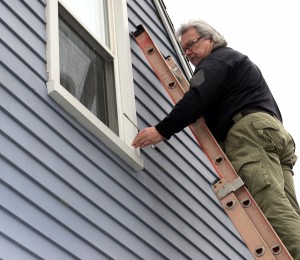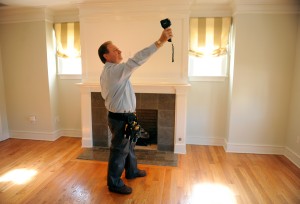BY ALEXANDER SOULE
Hearst Connecticut Media
Talk to home inspectors in Connecticut, and any number are relieved the real estate market is finally generating momentum and accelerating demand for their services.
The question becomes whether there will be sufficient numbers of new inspectors to handle that momentum if the pace of recovery quickens.
More than a half-dozen years after the implosion of the mortgage market, few people are obtaining licenses to enter the trade today, with membership in the Connecticut Association of Home Inspectors down by half over that period.
That is partly the result of new licensing requirements Connecticut enacted in 2001 that require an internship ”“ one in which the student pays to be supervised by an experienced veteran over the course of 100 inspections.
“It was a little more difficult to become a home inspector after 2001 because you had to go through the internship,” said Stan Bajerski, president of CAHI and co-owner of Houseworks Home Inspections in Milford. “Before that, all you had to do was print up a business card and a brochure and buy a flashlight and a ladder, and you were in business.”
If those few qualifications helped many become home inspectors in the economic boom of the late 1990s, licensing did not deter many in the subsequent decade, according to Tom Schlotter, owner of Danbury-based Allied Home Inspections. Schlotter came into the industry right after the licensing requirements took effect, completing an internship and building his business during the up market.
Training the competition
Getting licensed today can cost from $10,000 to as much as $15,000, Schlotter said. If that hefty price tag is a deterrent for would-be home inspectors, so is the concept for established companies of training potential competitors in their markets. Whereas apprentices in manufacturing and many other industries typically will find work at an established company, the home inspection business today remains one dominated by sole proprietors and two-person partnerships.
Larger home inspection companies locally include Pillar To Post, with local franchisee David Leopold employing a half-dozen staff who work out of their homes.
Bajerski sees a few reasons for the trend of solo shops, saying it is a profession that carries relatively high liability.
“I don’t know if there’s a lot of guys out there who would trust somebody to go out there and do the job (the same way) as an owner would,” Bajerski said. “The average guy in the home inspection business has all he can do to handle the work himself and does not like to control the quality of someone working under them.”
But Schlotter mentions another potential sticking point.
“A lot of guys don’t want to do it because basically you are teaching your competition,” Schlotter said. “That’s part of why this process is really not ideal.”
More often than not, people transition into home inspection as a career, often from a tangential sector like home remodeling or building maintenance, as was the case with Bajerski.
He first heard about home inspection while he and his wife were buying a house, in 1988, with Bajerski at the time a building maintenance supervisor in Westport.
Observing the individual he had hired knock out the job in a scant 45 minutes, Bajerski felt that he could do better, given his building trades background in mechanical systems and carpentry.
Declining membership
But he did not dive in, instead easing into the job on weekends while keeping his regular job until he felt he had built up a big enough base of referrals to do home inspection full time for a living. Bajerski estimated he does between 200 and 300 inspections a year.

- Fairfield resident David Leopold, of Pillar To Post in Stamford, uses an infrared device to detect the cause of a suspected water leak. Photo by Autumn Driscoll
That is in a normal year ”“ he estimated his business dropped at least 30 percent during the recession, and that the recovery was gradual.
“I didn’t think it would last as long,” Bajerski said. “Before 2008, they didn’t even have time to put a for sale sign in front of houses ”“ they were selling so fast that the signs weren’t even being put out there. Then I started noticing that the houses that did have signs, the signs were out front longer. You kind of knew something was going on.”
He was not alone, with Leopold saying it took about two years for Pillar To Post’s business to bounce back.
“It was bad enough that you were picking up the telephone to see if there was still a dial tone,” Leopold recalled. “I mean ”“ crickets.”
It drove a lot of home inspectors into other jobs. CAHI’s membership today is down by half to just more than 100 people.
If that cadre can absorb the full amount of any new business homebuyers can generate, then there are no issues. If they cannot, then Connecticut could find itself short-staffed in a key part of the home sale process.
For his part, Schlotter suspects that many former home inspectors maintained their license requirements and so in theory could re-enter the profession, but he added it is an open question whether they will.
Bajerski said people become home inspectors for varying reasons, including having lost a job previously and looking for other career options.
For many, it turns out not to be a good fit, whether they struggle to build a base of referrals that can keep business coming their way in good times and bad, or other reasons.
“There’s a high failure rate of people coming into this business since licensing,” Bajerski said. “I don’t have numbers for it, but someone I know who does internships says only about 10 percent of the interns get through it.”
Hearst Connecticut Media includes four daily newspapers: Connecticut Post, Greenwich Time, The Advocate (Stamford) and The News Times (Danbury). See stamfordadvocate.com for more from this reporter.





















